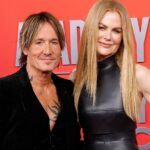Some parts of the menstrual cycle is simply better than others. At times, you are more likely to experience unpleasant symptoms such as bloatingpainful cramps, mood swings (looking at you, luteal phase). But thankfully there’s also a brief period of respite to prove it’s not completely wrong. This is where the follicular phase comes into play – a crucial, but criminally underrated part of the menstrual cycle that we seriously should be talking about more often.
You can think of the follicular phase as the calm before the storm. Not only is it less likely to cause pain and discomfort, but it can boost your moodlibido, and make you feel more energetic. For more information on what we think is the best phase of the menstrual cycle, we asked an ob-gyn to weigh in.
Experts featured in this article:
Renita F. WhiteMD, is a board-certified ob-gyn, women’s health advocate and advisor on The honey pot’s heart rate panel.
What is the follicular phase?
The menstrual cycle has four parts: menstruation, follicular phase, ovulation and luteal phase. The follicular phase is usually the longest phase of your menstrual cycle, taking place in the two weeks before ovulation and ending just as you start to ovulate, explains ob-gyn Renita F. White, MD. “During this time, the ovaries recruit a follicle that will release an egg during ovulation,” says Dr. White. “Follicle-stimulating hormone (FSH) and estrogen levels increase during this time to help with the process.”
Follicular phase symptoms
Throughout the follicular phase, a single “dominant follicle” develops faster than the rest. This follicle (a fluid-filled sac in your ovary) then releases more estrogen into the body in preparation for harboring an egg. According to Dr. White, these high estrogen levels can result in the following feel-good side effects:
- Increased energy
- Improved mood
- Better sleep
- Sharper concentration
- Higher libido
“During the follicular phase, any troublesome premenstrual symptoms you had will have resolved,” adds Dr. White. “This includes cramps, fatigue or moodiness.”
Can you get pregnant during the follicular phase?
Yes. In fact, according to Cleveland Clinicyou have a particularly good chance of getting pregnant if you have intercourse in the five days leading up to ovulation (and the best chance on the day you ovulate).
How long does the follicular phase last?
The follicular phase begins on the first day of your period and ends on the day you ovulate. That said, “You may not recognize that you’re ovulating,” says Dr. White. “Some signs may include a change in cervical mucus, new bloating or cramping.” Knowing this information can help you understand your body better or make important decisions about family planning and fertility.
Also, the exact length of the follicular phase varies from person to person. “Unlike the luteal phase which generally always lasts about two weeks after ovulation, the follicular phase can be shorter or longer for some people,” says Dr White. If you have a longer menstrual cycle (ie 35 days) this is probably due to a longer follicular phase. Similarly, if you have a shorter cycle (ie 21 days) you may have a shorter follicular phase. Either way, it’s nothing to stress about. “The process of increasing FSH and estrogen levels to recruit a follicle is still happening during this stage,” says Dr. White. The average follicular phase ranges from 14 to 21 days, per the Cleveland Clinic, depending on how long it takes to form the dominant follicle.
Chandler Plante (she/her) is the assistant health and fitness editor for PS. She has over four years of experience in professional journalism, and has previously worked as an editorial assistant for People magazine and contributed to Ladygunn, Millie and Bustle Digital Group.





